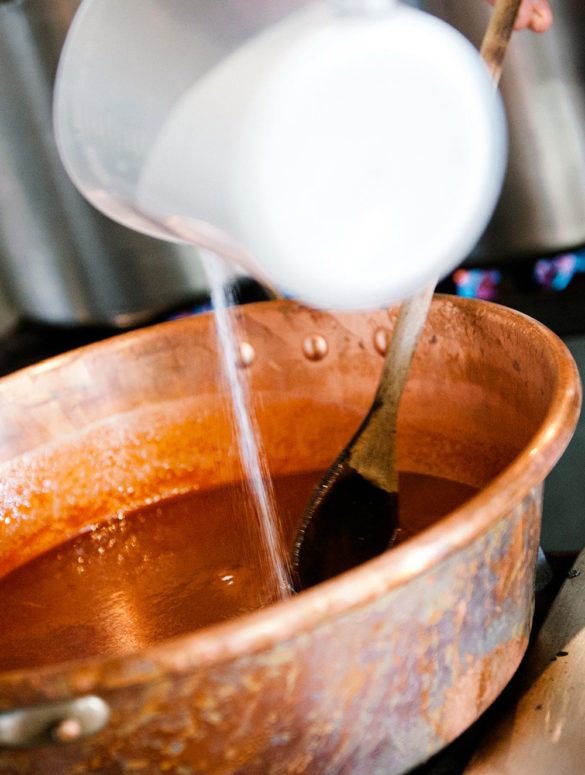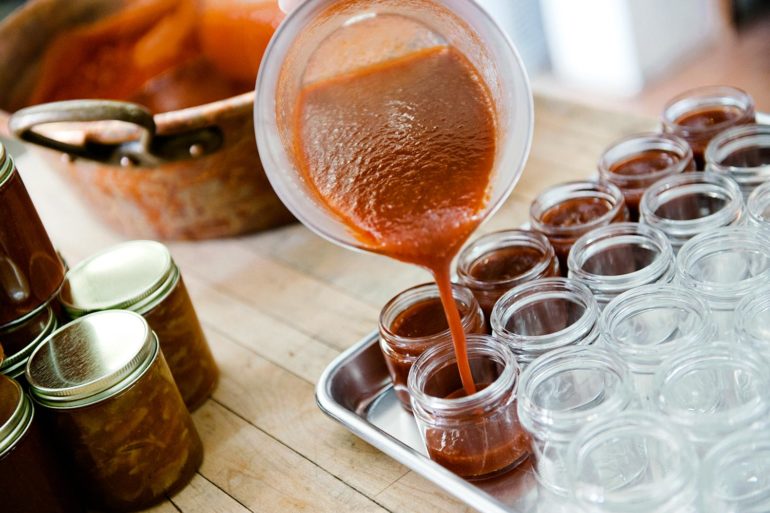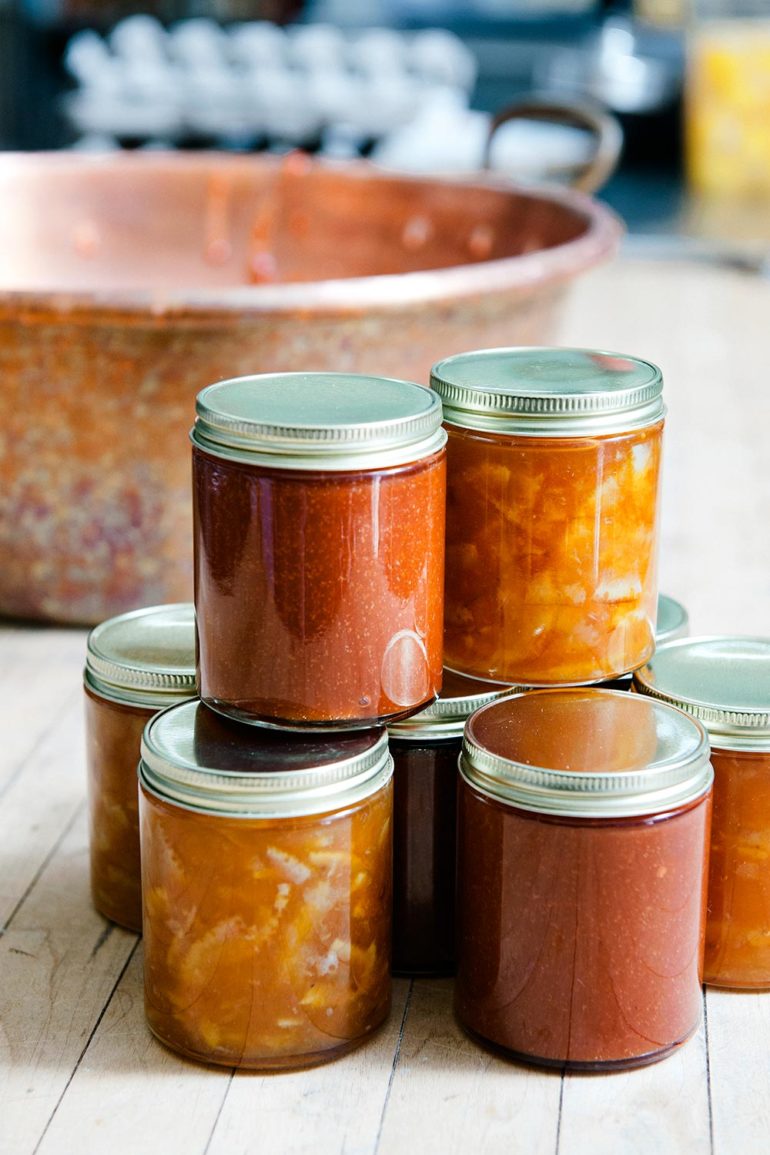In 2012, Aletha Thomas was teaching at a middle school on Kaua‘i when furlough days hit Hawai‘i’s public schools. Overnight, Thomas’ hours and pay were slashed, and she was shut out of her own school campus. It was—no pun intended—a jarring experience with monkeypod jam.
Looking for ways to make up the pay she lost as a result of the furloughs, Thomas whipped up a few jars of mango jam to see if they would move at her local farmers market. To her delight, the jam was a hit, selling out quickly and prompting her to make another batch, then another. After three consecutive weeks of her jams selling out at the farmers market, Thomas decided that if life was going to give her lemons, she would make marmalade.
Today, Thomas’ fruit-preserving enterprise, Monkeypod Jam, includes 50 types of jams, jellies, marmalades, curds, butters, and sauces that rotate week by week. A committed supporter of local agriculture, Thomas uses only Kaua‘i-grown produce in her seasonal preserves, even if it means some popular items aren’t always available. “As consumers, we’ve become very spoiled,” she says. Thomas follows the basic tenet she learned from her grandmothers, who preserved fruit to help the family get through the bitter winters of Minnesota and Saskatchewan: “Preserve only what grows around you, and only in season.”
Closely following nature’s rhythm means there’s no time to waste. So when a farmer (one of the 30 growers she buys from) called to tell her he had a mother lode of ripe tomatoes that needed moving immediately, she moved. Two hundred pounds of ripe tomatoes later, Thomas concocted one of her best-selling items: a spiced tomato jam humming with chutney-like flavors of pepper and cumin.
A certified master food preserver, Thomas utilizes traditional French Mauviel copper pots that heat up quickly and evenly, allowing her to capture flavors at peak freshness. Unopened, Monkeypod Jam products remain shelf-stable for about six months. And because they aren’t filled with a chemistry lab’s worth of artificial preservatives, they don’t stay good indefinitely. “Our ingredients list is very simple, like what your grandmother would have put in a jar,” she says.
Each six-ounce jar is filled with freshly picked produce and basic ingredients like dried spices and small amounts of sugar. The product line—available online, at farmers markets on Kaua‘i, and at Foodlands, Whole Foods Markets, and specialty stores across the islands—includes bananas Foster jam, Tahitian lime curd, papaya chutney, starfruit-ginger jelly, “lemquat” marmalade, and orange-chocolate sauce.
Monkeypod Jam has been a hit with visitors because it’s an easy, portable way to bring home something exotic and distinctly Hawaiian. Who in Wisconsin, in the dead of winter, would expect a jar of guava butter or jaboticaba jelly? For similar reasons, locals treat themselves or send a jar in care packages to loved ones, knowing that the sight and smell of liliko‘i curd or mountain apple pepper jelly is transformative, reminding faraway friends and family of home, or transporting them back in time to that tree they used to climb in their grandmother’s garden on bright summer days so long ago.





